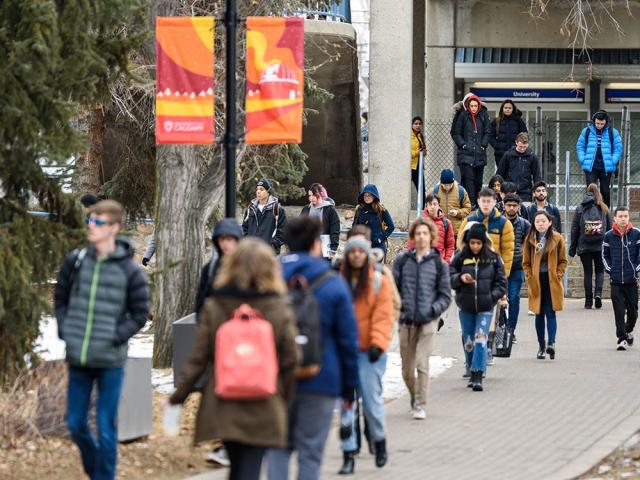Introduction
In recent years, the United States has been a popular destination for international students seeking higher education. However, the COVID-19 pandemic had a significant impact on the number of students coming to the country. The good news is that a recent report indicates that international student numbers in the United States have returned to pre-pandemic levels. This resurgence is partly due to changes made by President Joe Biden’s administration, which have allowed more students to qualify for work after graduating. In this article, we will explore the reasons behind this growth, the impact on American students, and the experiences of international students studying in the U.S.
The Increase in International Students
According to a report from the U.S. State Department and the Institute of International Education, over 1 million international students attended American colleges and universities in the 2022-2023 school year. This number is almost on par with the record set in 2018, indicating a strong recovery from the pandemic. While the number of Chinese students has decreased, there has been a significant increase in the number of students from India. Approximately 269,000 Indian students came to study in the U.S. during the 2022-2023 school year, making it the largest-ever group from a single country.

Reasons Behind the Growth
The growth in international students can be attributed to several factors. One of the main reasons is the changes made by President Joe Biden’s administration to permit more students to qualify for work after graduating. The government increased the number of study programs that qualify for STEM OPT (Optional Practical Training). STEM stands for science, technology, engineering, and math, and OPT allows students to stay in the U.S. and work for one year on their student visa. However, STEM students are now permitted to stay for an additional two years of OPT, making them highly qualified professionals by the time they complete their studies.
Popular Study Programs
A significant number of international students are enrolling in math and computer science graduate programs. These subjects saw a 20 percent increase compared to the previous academic year. In fact, over half of all international students in the U.S. are pursuing degrees in math, science, engineering, or business. Universities like Stevens Institute of Technology in Hoboken, New Jersey, are attracting international students due to their strong STEM programs and proximity to New York City. Stevens boasts a high employment rate for its STEM graduates, with over 90 percent finding work in their field of study.
Impact on American Students
While the increase in international students is positive for universities, it coincides with a decrease in American students attending college. A study from the National Student Clearinghouse reported a 3.6 percent decrease in first-year American students this year. This decrease may be attributed to various factors, including the impact of the pandemic on the economy and the rising cost of tuition. However, university leaders argue that the presence of international students enhances the cultural experience for American students and helps lower the cost of college by paying full fees.
Seeking a Different Cultural Experience
International students, like Dhruva Rathod from India, choose to study in the United States for various reasons. Rathod, currently pursuing a graduate degree in human-computer interaction at DePaul University in Chicago, explains that he came to the U.S. because the study program he desired had limited availability in India. While the U.S. offered 300 to 400 openings for graduate students in his field, India only had space for 50 students each year. Rathod also sought a different cultural experience and the opportunity to interact with people from all over the world.
Challenges and Opportunities
The process of studying abroad can be challenging for international students. Rathod highlights the lengthy application process and the financial burden as two significant hurdles he faced. However, he emphasizes that the high-quality education and exposure to different cultures make the experience worthwhile. The cost of studying in the U.S. can be a concern for international students, with tuition fees often exceeding $31,000 per year, excluding living expenses. Nonetheless, financial aid and scholarships help alleviate this burden to some extent.
The Future of International Students
While the current growth in international students is encouraging, some experts express caution about its sustainability. Costas Chassapis, the Senior Vice Provost for Graduate Education at Stevens Institute of Technology, acknowledges the euphoria surrounding the increase in students from India but warns that it may not continue indefinitely. However, he remains optimistic about the continued reasonable increase in international student numbers. The demand for American education remains strong, with universities like Stevens experiencing a significant rise in graduate applications. Efforts are also being made to diversify the student population by attracting students from countries like Indonesia and Vietnam, reducing reliance on a single country.

Conclusion
The return of international student numbers in the United States to pre-pandemic levels is a positive sign for American universities and the education sector as a whole. The changes made by President Joe Biden’s administration, allowing more students to qualify for work after graduating, have played a significant role in attracting international students. The increase in students from India, in particular, has contributed to this growth. While there are challenges and concerns, such as the decline in American student enrollment, the cultural exchange and financial benefits for universities are undeniable. The future of international students in the U.S. will depend on various factors, including government policies, economic conditions, and the ongoing demand for American education.
